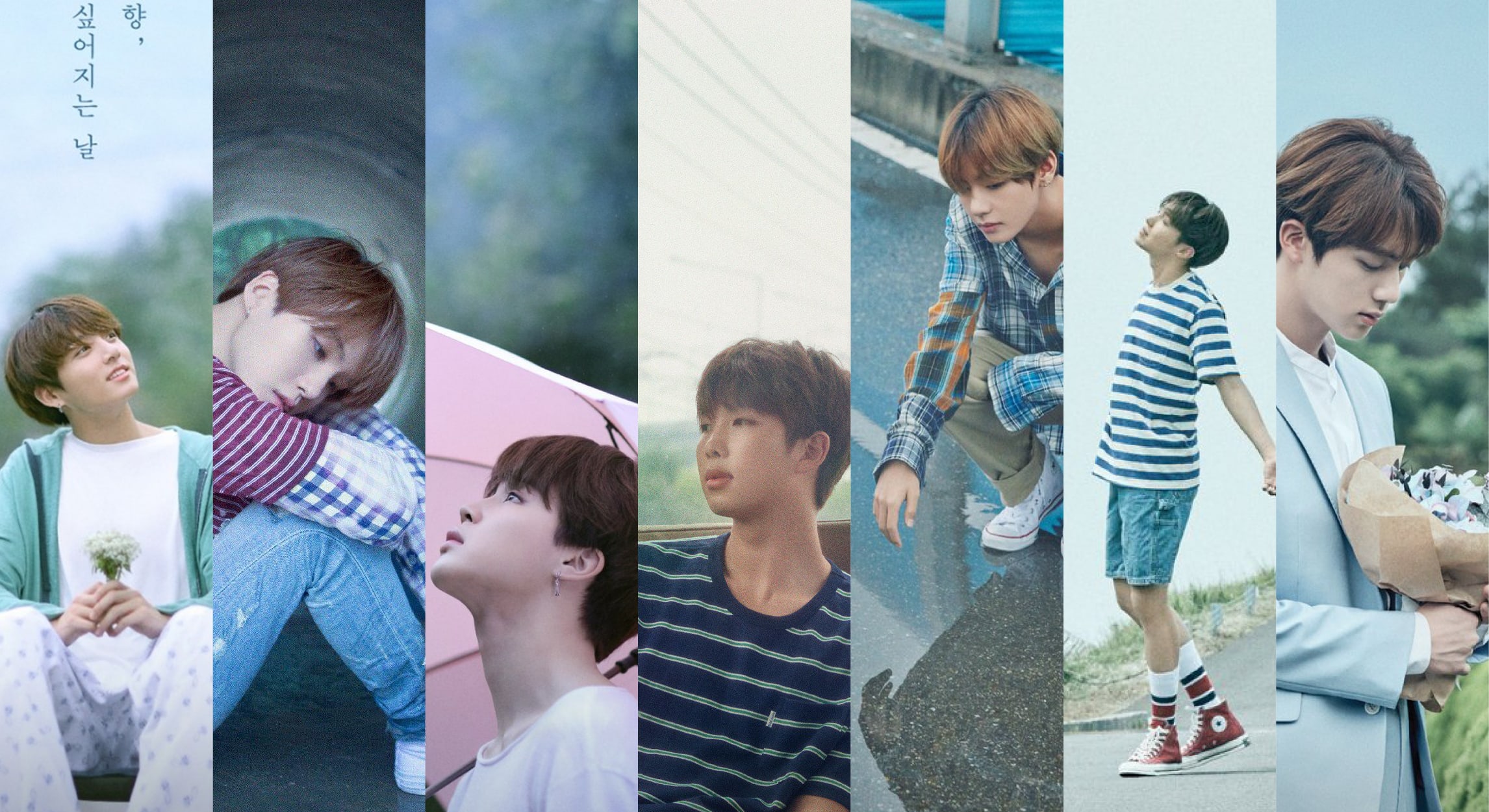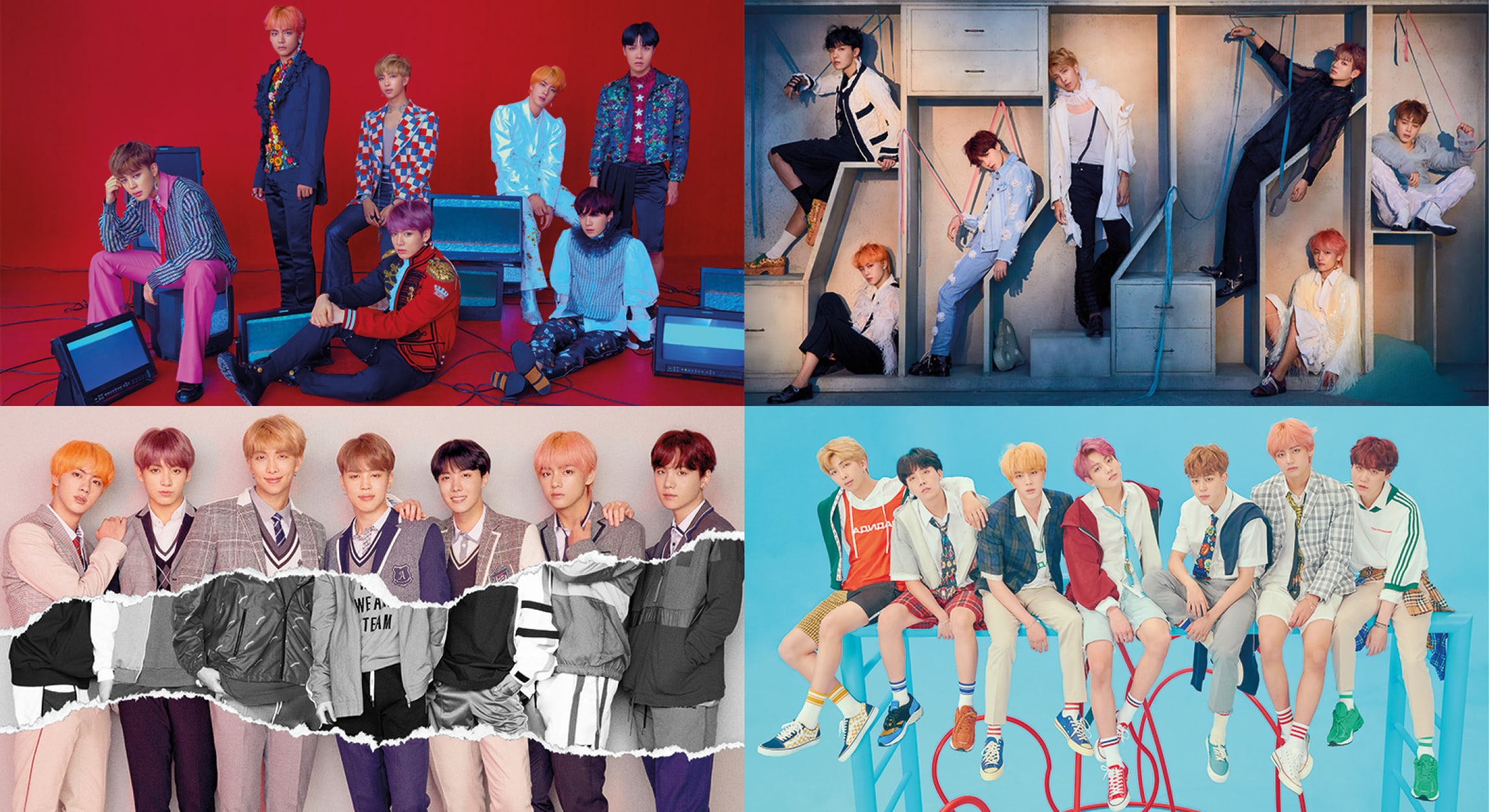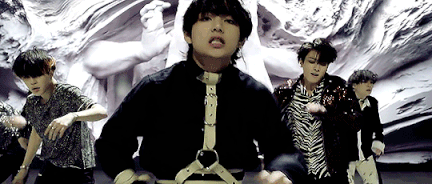
BTS's "Love Yourself" Is Now Complete: Here's A Look At The Era's Best Moments
Whether you’re a seasoned K-pop fan or new to the game, everyone knows the weird mixture of fear and anticipation that creeps up around midnight when comeback season is approaching. After a couple of scares and false alerts there’s always gonna be that one moment when you realize: this time, it’s legit and the teasers drop into your life, causing pure chaos.
BTS and Big Hit Entertainment are not exactly innocent when it comes to surprising fans and press alike with new releases, and with that, new facets of music and style. Now, almost a year after its beginning, “Love Yourself” era is finally complete with the release of “Love Yourself: Answer” and “IDOL.” What better moment than now to look back on the era’s best releases? Be it teasers, trailers, or MVs – let’s relive the magical era that is “Love Yourself,” from the first teasers for “Love Yourself: Her” to the brand new and final part, “Love Yourself: Answer.”
The drama posters

“Love Yourself” started out with rumors in 2017 that Big Hit Entertainment was looking for drama writers, mysterious filming locations, and what not. ARMYs went into overdrive trying to find out what was going on and were pleasantly surprised when individual drama posters were released, showing the boys in various cinematic settings. Jungkook’s image was the first one to be released, featuring our maknae in a wheelchair and a happy smile. Yoongi’s melancholic poster was next, followed by an umbrella wielding Jimin, thoughtful RM on a bus, fluffy V and his reflection, blissful J-Hope, and last but not least, an incredibly boyfriend-y Jin. Later, another set of posters was released with split posters, each featuring two members; except Jin, who got an individual poster.
The highlight reels and story

In August 2017, BTS dropped the “Highlight Reel,” drama short films featuring the members and telling various stories. Just like the comeback trailers, the highlight reels were compiled in four parts, “起,” “承,” “轉,” and “結;” based on Kishōtenketsu, a traditional structure of narrative development: Introduction, development, twist, and conclusion. In the drama shorts, the plot of “Love Yourself” era is connected to “The Most Beautiful Moment In Life” era’s story, seemingly tying loose ends together. A full analysis of the story would exceed the constraints of this article, but let’s try for a rough outline: After starting out alone and (maybe) falling in love, the boys learn through trouble, pain, or disappointment, that before loving someone else, it’s most important to love themselves first. Therefore, “Love Yourself” is not just merely a title or theme, but a narrative that perpetuates throughout every release of the era.
Fans were pretty surprised to see the boys finally interact with female actresses/ trainees again after they didn’t for a long time. All in all, pretty much everyone was impressed by the boys showing off their acting skills and more than hyped to go into full on conspiracy theory mode. Already pretty psyched by the contents of the regularly released “Notes,” it’s safe to say; things like the mysterious flower or Jimin allegedly being replaced by Jungkook for one shot provoked ARMY theory investigators to go into overdrive. And boy, they did.
The trailers

Just like the highlight reels, there were four trailers/intros. The vocal line blessed fans with individually performed songs and MVs, each introducing one of the four parts of the narrative. “LOVE YOURSELF 承 Her ‘Serendipity’” was the first installment of the series, performed by Jimin. After the release of “DNA” and “MIC Drop,” Jungkook followed up with “Euphoria : Theme of LOVE YOURSELF 起 Wonder” including a lot of references to “The Most Beautiful Moment In Life” era, making seasoned ARMYs weep with nostalgia. A few weeks later they dropped “LOVE YOURSELF 轉 Tear ‘Singularity,’” which was Tae’s time to shine and bring a more serious, darker tone to the table. As the third intro, it stands for the “twist” part of the narrative and was followed by the release of “Fake Love.” Finally, Jin graced us with “LOVE YOURSELF 結 Answer ‘Epiphany,’” concluding the narrative and proclaiming the end of “Love Yourself” era with the release of the album and the single “IDOL.” Each one of the four songs really shows the respective member’s vocal abilities – if you can watch these without getting goosebumps at least once, you’re probably made of stone.
The concept photos

Aside from the release of the drama posters and shorts, the promotions for “Love Yourself: Her” in September 2017 included the revelation of the concept photos, divided into “L” and “O” or “V” and “E” versions. “L” and “O” showed the boys in a romantic vintage setting, with faded colors. In contrast, the “V” and “E” photos were visually more intense with lots of color blocking in bold colors.

The teaser images for “Love Yourself: Tear” were released in May 2018. This time, versions “Y” and “U” showed the members in a romantic setting, while “O” and “R” went for the infamous jeans and the black-and-white look. In comparison to “Her,” especially the colorful “V” and “E” versions, “Tear” shows a more mature, calm BTS. And looking at Jimin’s jeans look (which is just the tip of the iceberg), you might consider it the group’s sexiest concept pictorial yet.

Moving on to the concept images for “Love Yourself: Answer”: for “S” and “E” versions, the boys are shown in various sets; red boxes with eyes, hands, or surveillance cameras for one and fairy-like bubbles for the other. In “L” and “F” editions, the first one includes half black-and-white, half color photos of the boys, while the “F” photos feature the members hanging out on a jungle gym. This photo shoot concept is the first BTS album concept in a long time to feature elaborate sets and items, giving the concept a slightly different feel than it’s predecessors.
The songs and MVs

Just a warning, this one gets a little analytical. So put on your reading glasses and hold on tight. For the MVs and respective teasers in this era, “Love Yourself: Her” has “DNA” and “MIC Drop,” “Love Yourself: Tear” has “Fake Love,” and “Love Yourself: Answer” has “IDOL” (for now). The first MV of the era, “DNA,” and the latest, “IDOL,” both feature a very bright, colorful concept including playful visuals and stunning animations. Both also feature optimistic, positive lyrics; but while “DNA” may seem just optimistic and love-struck, “IDOL” conveys a more confident and individualistic message.

Looking at the four-part narrative structure, both the visual and contextual similarities of the two are based on the common positive undertone – one starting out on an optimistic note, and the other coming to the conclusion of loving oneself, inheriting a positive, though perhaps less naive, mindset. Also matching the theme of finding yourself, “IDOL” includes traditional Korean elements and combines them with modern vibes, which captures the boys’ identity as both artists and individuals.

In contrast, “Fake Love” clearly has a darker theme, featuring mysterious hooded figures, dark colors, and lots of black. The song symbolizes a very mature and also realistic (maybe even pessimistic) view on love and life. Corresponding with the 轉 (twist) part of the narrative structure (as mentioned above), both the song and the MV express the physical and emotional darkness the boys have to go through in order to get from hope and optimism in “DNA” to actual confidence in “IDOL.”

Lastly, “MIC Drop” may not perfectly fit into the narrative structure established in the beginning of the era, but it also incorporates a very confident mindset. While it was released during “Love Yourself: Her,” its message fits “Love Yourself: Answer” quite well, though the kind of self love in “MIC Drop” might be a more boastful one than the one conveyed with “IDOL.” Either way, we’re glad “MIC Drop” got its own MV; in the tradition of BTS’s badass hip hop side that we got to know and love over the years, it’s great to see that hip hop is, in fact, very much alive.
Conclusively, there’s only one thing left to say about this era’s MVs: all analytics aside, they’re visual fireworks, eye candy for fans, and bait for unsuspecting souls.
The rap line’s “Trivia” songs

Just like the vocal line got their spotlight with the trailers, the rap line finally got time to shine individually with “Love Yourself: Answer” and the “Trivia” tracks. For those of you who were fans of the calm or unusual side of the rap line; these tracks might be very much your cup of tea. J-Hope graces fans with an upbeat song with the title “Trivia 起 : Just Dance,” which promotes us to do just that, while “Trivia 承 : Love” is Namjoon’s ode to the most beautiful emotion. In “Trivia 轉 : Seesaw,” Yoongi literally blows fans away with proving the man can sing! Honestly, we’re still not okay with this.
The non-MV songs

How could we not talk about literally all the other songs on this era’s albums? Everyone knows amazing “Go Go,” “Airplane pt. 2,” or “Anpanman” because those have been performed on stage by the group. But the lesser known album-only songs deserve their time to shine too. Take for example “dimple,” “Pied Piper,” “The Truth Untold,” “Magic Shop,” “Outro: Tear,” or the “Save Me” sequel, “I’m Fine.” Or the outros. Or the hidden tracks! You see, it’s really hard not to mention them all. Generally speaking, the sheer number of various genres, facets, and moods on BTS’s albums ensures that pretty much anyone who takes the time to listen to all tracks will (probably) find something to like. If you haven’t had time yet to listen to the full albums, please do, because (and this is true for many artists out there) the title tracks are merely the tip of the iceberg.
The collabs

In this era, BTS got to collaborate with a lot of Korean and international artists. In “Love Yourself: Her,” “Best Of Me” was produced by The Chainsmokers‘ Andrew Taggart while “MIC Drop” featured Steve Aoki and had a remix version with rapper Desiigner. For “Love Yourself: Answer” and the title song “IDOL,” Big Hit announced a collab with rapper Nicki Minaj. It’s amazing for ARMY to see the boys getting the chance to work with their idols and spreading the love for K-pop to new fandoms and genres. After seeing the existing collabs, one thing’s for sure: we’re super excited for the future of BTS when it comes to new collaborations and we hope the boys will get to work with all their favs.
The mission

Not only did BTS inspire fans worldwide through their music and various other content, they also took action for several charitable causes. In the epicenter of the “Love Yourself” era, BTS worked together with UNICEF to launch the “Love Myself” campaign, aspiring to stop violence against children and teens worldwide. Various forms of donations are being collected into a fund, promoted by the group’s influence and social (media) following. Both Big Hit Entertainment and the members prove that they are aware of their responsibility and that they won’t shy away from taking action in order to try and make the world a better place.
You can read more about the campaign here.
That’s it for our compilation of the most important releases and campaigns throughout the “Love Yourself” era. And if you think that looks busy; there’s also concerts, variety content, streams, YouTube, award shows, etc. etc. etc.
What is your favorite part of “Love Yourself” era? What do you think is going to come up next for the boys? Let us know in the comments!
daisygonzo has returned to Europe after spending a scorching hot summer in Seoul. Follow her on Instagram to see what she’s up to.





Comments